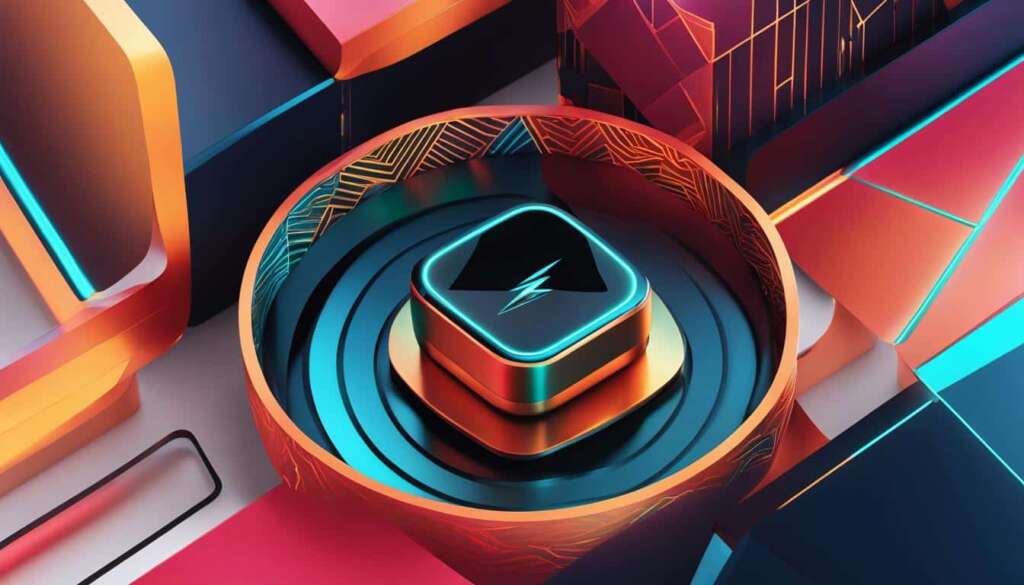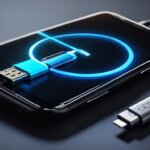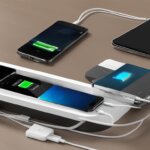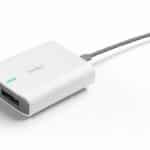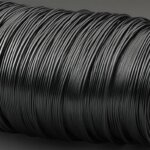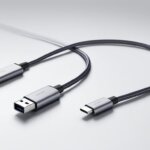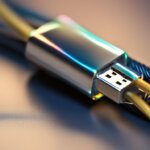Table of Contents
USB-C charging is a newer technology that is replacing traditional USB ports. It is a small, reversible, versatile port that transfers data and charges devices at high speeds. Unlike its predecessor, the USB-C connector can provide more power and faster charging times. It is now standard on various devices like laptops, smartphones, and tablets.
USB-C charging works differently than traditional USB charging, using a different type of cable and port to transfer data and power. USB-C cables are designed to transmit both power and data, supporting faster charging speeds and higher power delivery. The USB-C port also supports USB Power Delivery, a fast-charging technology that can deliver up to 240 watts of power. It can also deliver power to other devices and support video output with the right cable.
Now that we have a basic understanding of what a Type-C charger is and its essential features, let’s explore further in the following sections about USB-C cables and connectors, choosing the right USB-C charger, and using USB-C chargers safely.
Understanding USB-C Cables and Connectors
USB-C cables and connectors play a crucial role in the world of modern technology, offering a range of features and specifications to meet various needs. Let’s explore the different types of USB-C cables and connectors available:
USB-C to USB-C Cables
One of the most commonly used cables for both charging and data transfer is the USB-C to USB-C cable. This cable features the same USB-C connector on both ends, making it versatile for connecting devices such as laptops, smartphones, and tablets. USB-C to USB-C cables are ideal for fast charging of devices that support USB Power Delivery, ensuring quick and efficient charging times.
USB-C to USB-A Cables
USB-C to USB-A cables are designed to bridge the gap between newer USB-C devices and older devices that still use USB-A ports. These cables allow you to connect your USB-C device to a traditional USB-A port for charging or data transfer. They are particularly useful for charging older smartphones or transferring files to computers without USB-C ports. However, it’s important to note that USB-C to USB-A cables may not support fast charging or the full capabilities of USB-C technology.
USB-C to HDMI Cables
If you need to connect your USB-C device to an external display, USB-C to HDMI cables are the perfect solution. These cables enable video output from your USB-C device to an HDMI-enabled display, such as a monitor or TV. Whether you want to enjoy high-quality video playback or use your device for presentations, USB-C to HDMI cables provide a convenient and reliable connection.
Thunderbolt Cables
Thunderbolt cables are high-speed data transfer cables that utilize the USB-C connector. They offer blazing-fast data transfer speeds and are compatible with a wide range of devices, making them ideal for demanding applications such as video editing and gaming. Thunderbolt cables support various protocols and are renowned for their versatility and performance.
Choosing the right USB-C cable depends on your specific needs and the devices you own. Consider factors such as charging requirements, data transfer speeds, and device compatibility when selecting the appropriate cable.
| Cable Type | Features | Charging Support | Data Transfer Speeds |
|——————-|———————————-|———————|————————-|
| USB-C to USB-C | Same connector on both ends | Supports fast charging | High-speed data transfer |
| USB-C to USB-A | Connects USB-C devices to USB-A | May not support fast charging or full USB-C capabilities | Data transfer speeds vary |
| USB-C to HDMI | Enables video output to HDMI display | May not support charging | Data transfer speeds vary |
| Thunderbolt | High-speed data transfer, versatile | Supports fast charging (device-dependent) | Blazing-fast data transfer speeds |
As seen in the comparison table above, each USB-C cable type offers distinct features and capabilities. Consider your specific requirements and device compatibility to choose the right USB-C cable for your needs.
Choosing the Right USB-C Charger
When it comes to charging your devices quickly and safely, selecting the right USB-C charger is essential. Several factors should be taken into consideration, including the charger’s wattage, size, and number of ports.
Wattage: A higher wattage charger can charge your device at a faster rate. However, it is important to ensure that the charger’s wattage does not exceed the maximum charging capabilities of your device. Using a charger with higher wattage from a reputable brand is generally safe and can provide efficient charging.
Size: Consider the physical size of the USB-C charger. If you travel frequently or have limited space, a compact and portable charger may be more suitable for your needs. On the other hand, if you require a charger for a fixed location like your desk or bedside table, a larger charger may not be an issue.
Number of Ports: Evaluate how many devices you intend to charge simultaneously. USB-C chargers are available with different numbers of ports, allowing you to charge multiple devices at once. If you have several devices that require charging simultaneously, a charger with multiple ports may be beneficial.
It is important to note that the compatibility of the USB-C charger with the USB-C cable you are using is crucial. Make sure to match the charger with a high-quality USB-C cable to ensure optimal performance and to avoid potential issues.
By considering these factors and selecting a charger that aligns with your specific needs, you can enjoy efficient and safe charging for your USB-C devices.
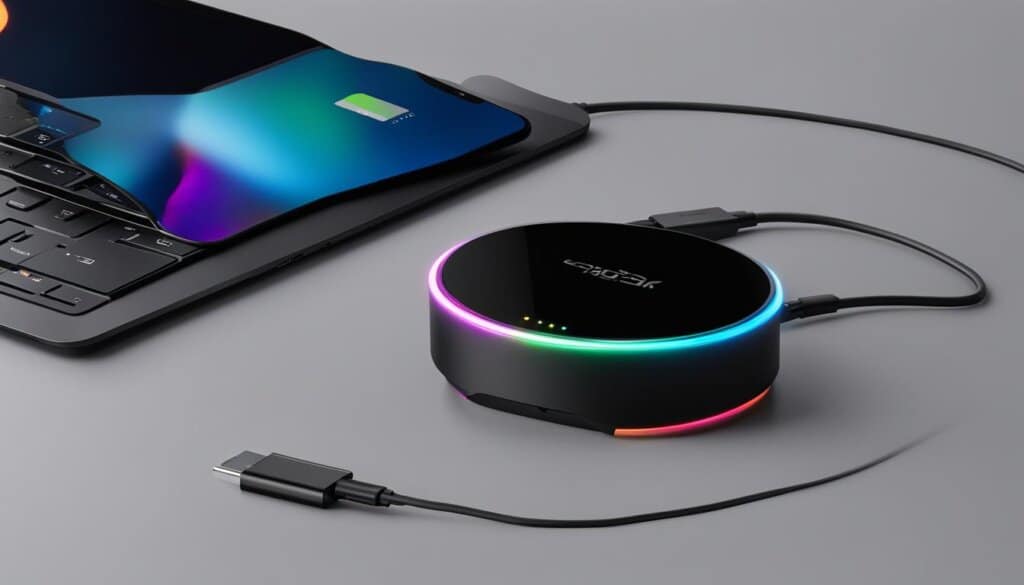
| Brand | Wattage | Size | Number of Ports |
|---|---|---|---|
| Brand A | 45W | Compact | 1 |
| Brand B | 65W | Portable | 2 |
| Brand C | 90W | Large | 3 |
Source: Author’s recommendation based on industry standards and customer reviews.
Using USB-C Chargers Safely
When it comes to USB-C charging, safety should always be a top priority. By following a few simple precautions, you can ensure that you charge your devices safely and avoid any potential issues.
First and foremost, it is crucial to use high-quality and genuine chargers and cables. Investing in reputable brands will not only guarantee safe charging but also prevent problems like overcharging, overheating, and even fire hazards. Avoid the temptation to opt for cheap and unreliable options, as they can pose serious risks to both you and your devices.
Additionally, it is essential to protect your charger from extreme temperatures. USB-C chargers are sensitive to heat and cold, and subjecting them to such conditions can lead to damage or even fires. Store your charger in a cool and dry place, away from direct sunlight or any hot environments that may compromise its integrity.
By adhering to these safety measures, you can confidently and securely use USB-C chargers without any worries. Remember, prioritizing safe charging practices and investing in high-quality equipment are key to a seamless and risk-free charging experience.
FAQ
What is a Type-C charger and why is it essential?
A Type-C charger is a newer technology that is replacing traditional USB ports. It is a small, reversible, versatile port that transfers data and charges devices at high speeds. Unlike its predecessor, the USB-C connector can provide more power and faster charging times. It is essential for charging various devices like laptops, smartphones, and tablets.
What are the different types of USB-C cables and connectors available?
There are several types of USB-C cables and connectors available. The most common is the USB-C to USB-C cable, which has the same connector on both ends and is suitable for fast charging and data transfer. USB-C to USB-A cables are ideal for older devices that don’t have a USB-C port and may not support fast charging. USB-C to HDMI cables are designed for devices that support video output, allowing you to connect your device to an external display. Thunderbolt cables are high-speed data transfer cables that use the USB-C connector, offering fast data transfer speeds and support for various protocols.
How do I choose the right USB-C charger?
When choosing a USB-C charger, there are a few factors to consider. These include the charger’s wattage, size, and number of ports. A higher wattage charger can charge your device faster, but it should not exceed the device’s maximum charging capabilities. The size and number of ports depend on your charging needs and the devices you will be charging. It is important to match the charger with the USB-C cable you are using and ensure they are of high quality to avoid potential issues.
How can I use USB-C chargers safely?
To use USB-C chargers safely, follow these precautions. First, use high-quality and genuine chargers and cables to ensure safe charging. Using cheap and unreliable chargers or cables can lead to overcharging, overheating, and potential fire hazards. Avoid exposing the charger to extreme temperatures, as this can damage the charger and potentially cause a fire. Store the charger in a cool and dry place, away from direct sunlight or hot environments.

